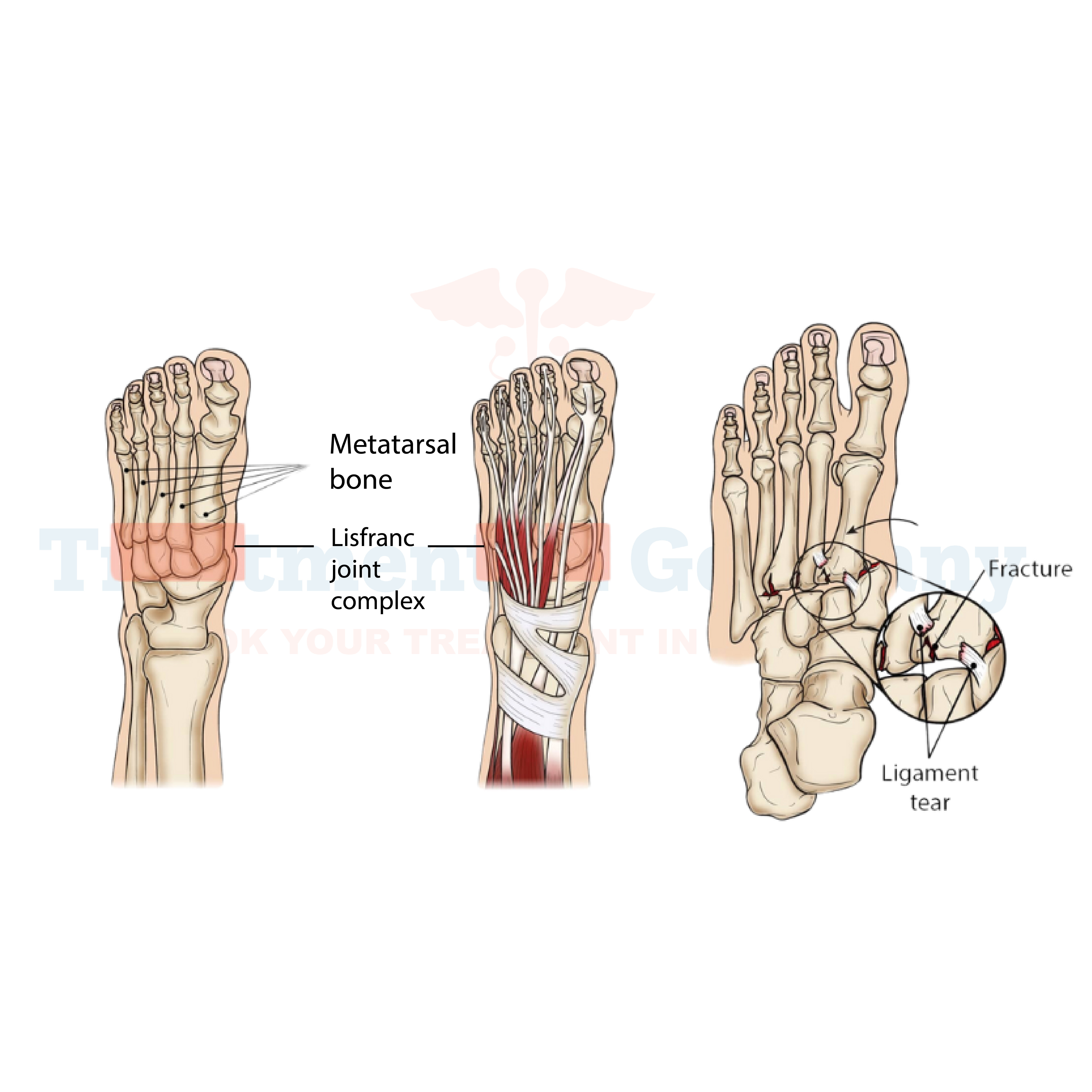What is Lisfranc Injury:
Lisfranc injury refers to damage to the ligaments and/or bones in the midfoot region, particularly the Lisfranc joint complex. This complex is crucial for maintaining the arch of the foot and facilitating normal walking and running.
Lisfranc injuries commonly occur due to trauma, such as a sudden twisting motion or a direct impact to the foot, often seen in sports-related incidents or accidents.
Side effects of Lisfranc Injury:
The symptoms of a Lisfranc injury can vary depending on the severity but may include pain, swelling, bruising, and difficulty bearing weight on the affected foot. In some cases, individuals may also experience instability in the midfoot area, making it challenging to walk or engage in regular activities.
How is Lisfranc Injury diagnosed?
Diagnosing a Lisfranc injury typically involves a thorough physical examination by a healthcare professional, along with imaging tests such as X-rays, CT scans, or MRI scans.
These tests help assess the extent of damage to the bones and ligaments in the midfoot region and determine the appropriate course of treatment.
Potential treatments of Lisfranc Injury:
Treatment for Lisfranc injury depends on various factors, including the severity of the injury, the patient's overall health, and their activity level. In less severe cases, conservative measures such as rest, ice, elevation, and immobilization with a cast or boot may be sufficient to allow the injury to heal.
However, more severe injuries or those with significant displacement of bones may require surgical intervention.
Surgical options for Lisfranc injuries may include:
👉 Contact us for further information and receive a complimentary consultation.

.webp)
.webp)
 (1).webp)
 (1).webp)

.webp)
.webp)
 (1).webp)
 (1).webp)
